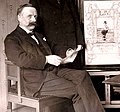
Louis Marie-Anne Couperus was a Dutch novelist and poet. His oeuvre contains a wide variety of genres: lyric poetry, psychological and historical novels, novellas, short stories, fairy tales, feuilletons and sketches. Couperus is considered to be one of the foremost figures in Dutch literature. In 1923, he was awarded the Tollensprijs.

George Wilhelm Kettmann or George Kettmann Jr. was a Dutch poet, writer, journalist and publisher who promoted Nazism in the Netherlands. With his wife, he founded the best known Dutch Nazi publishing house, De Amsterdamsche Keurkamer. Until 1941 he was editor in chief of Volk en Vaderland, the weekly journal of the National Socialist Movement in the Netherlands (NSB), the movement of Anton Mussert.

Dutch Indies literature or Dutch East Indies literature is the Dutch language literature of colonial and post-colonial Indonesia from the Dutch Golden Age to the present day. It includes Dutch, Indo-European and Indonesian authors. Its subject matter thematically revolves around the VOC and Dutch East Indies eras, but also includes the postcolonial discourse.
Caroline Anne Freiin de Westenholz is an Anglo-Dutch art historian and writer. She is the founder of the Louis Couperus Museum in The Hague.
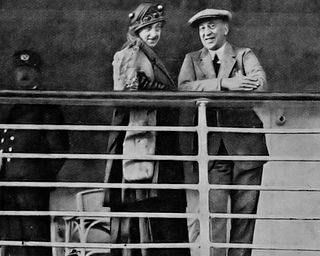
Elisabeth Wilhelmina Johanna (Betty) Couperus-Baud, was a Dutch translator. She was the wife of the Dutch writer Louis Couperus (1863–1923).
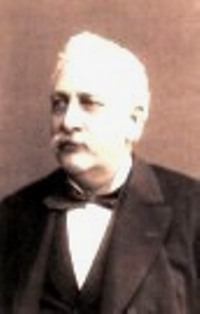
John Ricus Couperus was a Dutch lawyer, member of the Council of Justice in Padang, member of the High Military Court of the Dutch East Indies and the landheer of Tjikopo. He was also the father of the Dutch writer Louis Couperus and knight in the Order of the Netherlands Lion.
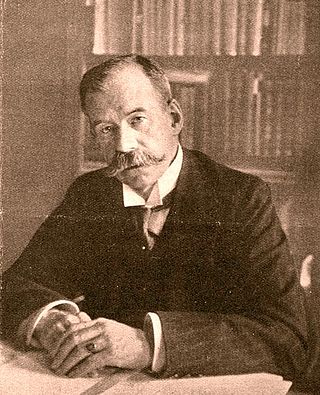
Conrad Theodor "Coen" van Deventer was a Dutch lawyer, an author about the Dutch East Indies and a member of parliament of the Netherlands. He became known as the spokesman of the Dutch Ethical Policy Movement. He lived at Surinamestraat 20, The Hague (1903–1915), former residence of John Ricus Couperus, his son writer Louis Couperus and the rest of his family (1884–1902).
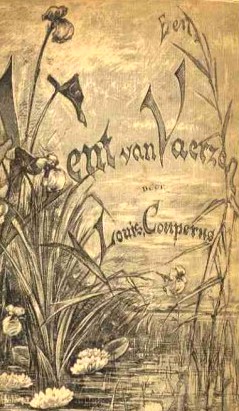
A ribbon of poems was the literary debut of Dutch writer Louis Couperus. The collection of poetry A ribbon of poems received a good review by critic J.H. van Hall in the Dutch literary magazine "The Gids"; Van Hall compared Couperus' poetry with those written by Heinrich Heine, Everhardus Johannes Potgieter and Pieter Corneliszoon Hooft; Jan ten Brink, Couperus' teacher and later professor at the University of Leiden drew comparisons with Constantijn Huygens. Not every critic however was that positive; Couperus' debut was also termed "contrived and effeminate".

Orchids, a collection of prose and poetry is a collection of prose and poetry written by Dutch writer Louis Couperus, which was published in 1886. Couperus published his debut, A ribbon of poems in 1886 with publisher J.L. Beijers. The rights to publish Couperus' books were taken over by publisher A. Rössing, who then published the second book of Couperus, Orchids, a collection of prose and poetry. After Rössing filed for bankruptcy in 1890 the rights were taken over by L.J. Veen, who would publish the second edition in 1895. In 1989 Veen would reprint Orchids when Couperus' complete works were published.
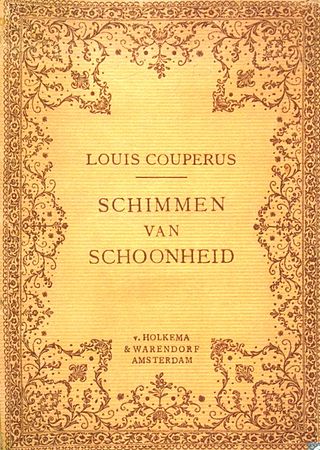
Schimmen van schoonheid is a collection of short stories, written by Louis Couperus and published by Van Holkema & Warendorf in 1912. It is not known how many copies were printed for the first edition, but this edition was in any case sold out by 1929. The second edition was published in 1962 by Querido in the so-called Salamander series.
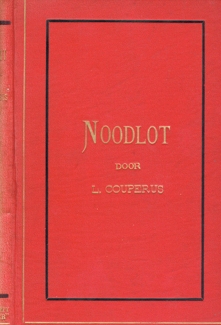
Footsteps of Fate is a novel written by Louis Couperus and published in 1891. Footsteps of Fate was first published in the Dutch magazine "De Gids". In 1891 the novel was translated into English by Clara Bell and published under the title Footsteps of Fate. The first two Dutch editions were published by Elsevier ; the second to eighth editions were published by L. J. Veen, except for the sixth edition, which was published by De samenwerkende Uitgevers. The English translation was published with Heinemann's International Library, under the authority of Edmund Gosse. His attention was drawn to this book by Maarten Maartens.

Ecstasy: A Study of Happiness is a novel written by Louis Couperus and published in 1892 by L.J. Veen in a first edition of 1,250–1,500 copies. A second edition was printed in 1894 and a third in 1905. Ecstasy was the first book of Couperus that was published by L.J. Veen, later his regular publisher. Couperus received a wage of 550 guilders for the first edition. Ecstasy was first published in the Dutch literary magazine The Gids. The book was translated into English by Alexander Teixeira de Mattos in 1919 and published by Dodd, Mead and Company.
Wilhelmus "Willem" Tholen was a Dutch male weightlifter, who competed in the Light-Heavyweight category and represented the Netherlands at the Olympic Games.
Jacob Hiegentlich was a gay Dutch poet of Jewish descent. He committed suicide in 1940, at age 33, days after the German invasion of the Netherlands.
Hans Renders is a professor of history and biography theory at the University of Groningen. Since 2004, he is also the head of the university's "Biography Institute".

Jacques Fabrice Herman Perk was an important Dutch poet of the late 19th century. His crown of sonnets Mathilde, published by Willem Kloos, was the first important announcement of a renewal in Dutch poetry brought about by artists that came to be known as the Tachtigers. Perk's lyrical poems about nature, especially his sonnets, were influenced by Percy Bysshe Shelley, and were of great importance to Dutch poetry.

Anne Vegter is a Dutch poet, playwright, and writer of children's literature. She is the first woman to hold the position of Dichter des Vaderlands.
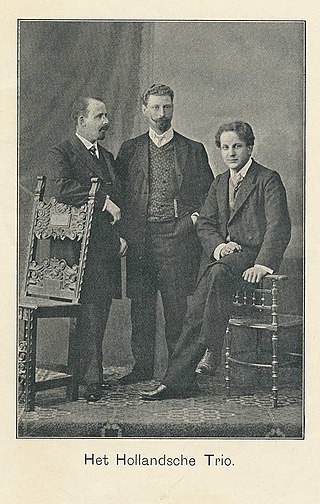
The Dutch Trio was a musical ensemble for chamber music, consisting of Coenraad Valentijn Bos (piano), Joseph Maurits van Veen (violin) and Jacques van Lier (cello), that was very successful in Berlin between 1899 and 1910 because of their tasteful choice of repertoire and careful interpretation. The piano trio gave performances throughout Germany and also in Italy, France, the Netherlands and Denmark.

Antonius Johannes (Antoon) Derkinderen was a Dutch painter, Glass artist, Draftsman and designer of book covers.

L. Smit en Zoon previously known as Fop Smit, was a Dutch shipbuilding company located in Kinderdijk. Its successor is now part of Royal IHC.



